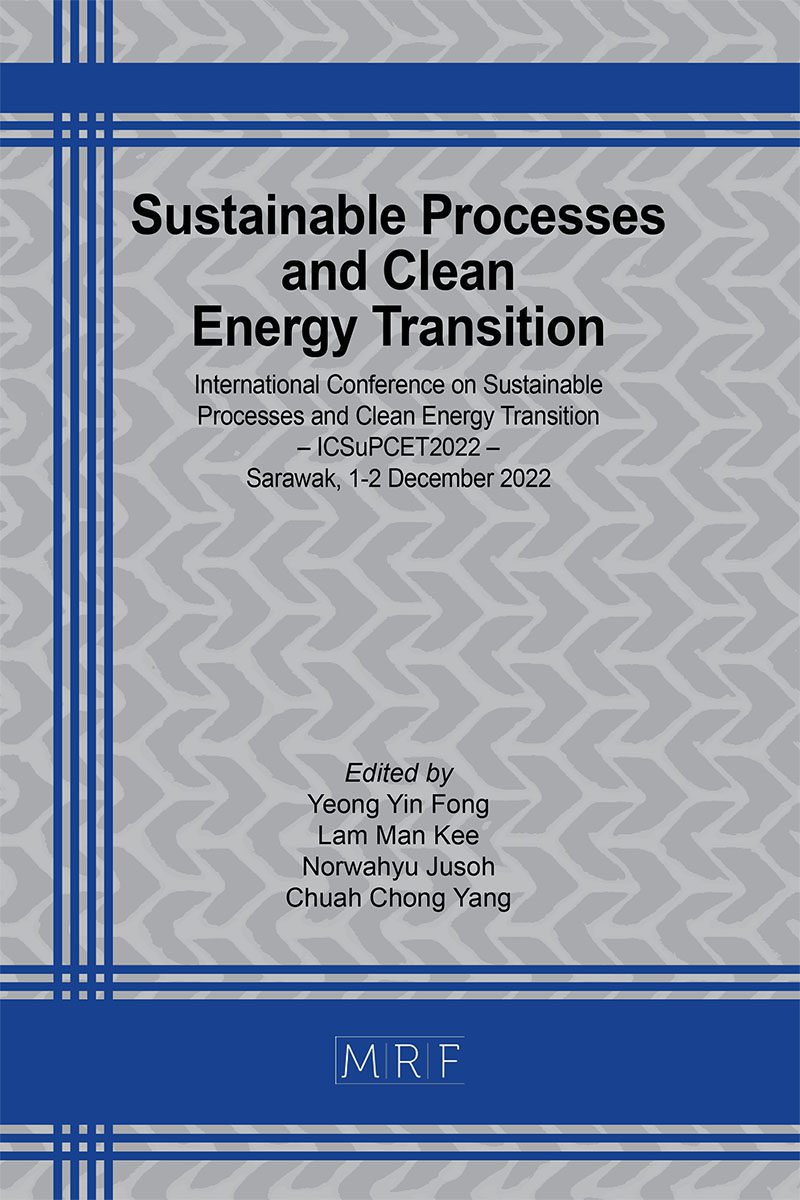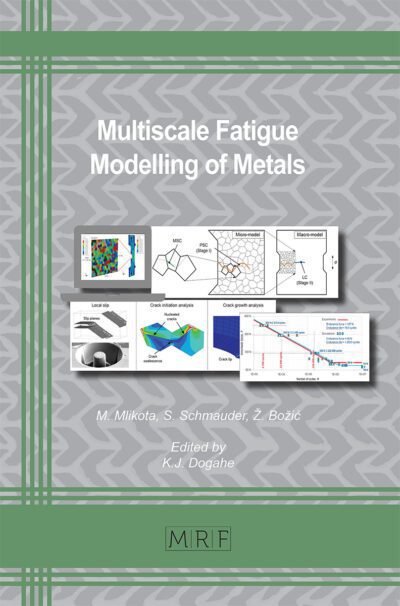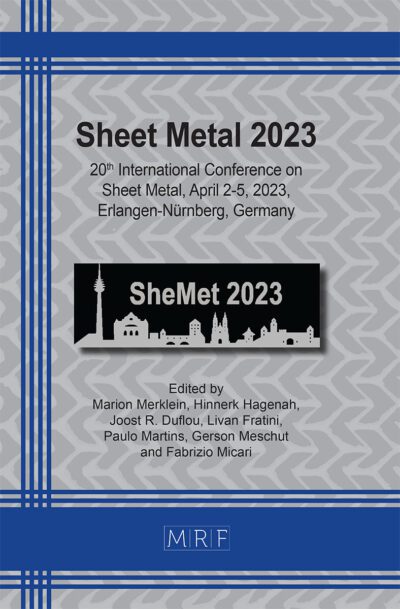Effect of particle size of fly ash and solid to liquid ratio on microstructure and mechanical properties of geopolymer
AHMER Ali Siyal, RASHIDAH Mohamed Hamid, RASHID Shamsuddin, MUHAMMAD Moniruzzaman
download PDFAbstract. This paper describes the effect of particle size of fly ash and solid to liquid ratio on the microstructure and flexural strength of fly ash geopolymer for coating applications. Sodium hydroxide concentration of 12 M was used for the preparation of geopolymers. The mechanically activated fly ash was divided into two parts based on the particle size (MFA A (11.81 µm) & MFA B (8.59 µm)). The decrease of particle size of fly ash and increase of S:L ratio produced dense and compact geopolymer which is due to the increase of reactivity of fly ash with the decrease of particle size and increase of water content. The decrease of particle size increased the flexural strength of geopolymer from 13.39 MPa (OFA 1) to 23.84 MPa (MFA B-III). The decrease of S:L ratio showed irregular trend with optimum flexural strengths of 13.39 MPa, 16.74 MPa, and 23.84 MPa obtained for OFA 1, MFA A-II, and MFA B-III respectively. The optimum flexural strength of 23.84 MPa was obtained. The mechanical activation is a useful technique to increase the reactivity of fly ash and produce dense and compact geopolymer with higher flexural strength.
Keywords
Fly Ash, Geopolymer, Microstructure, Mechanical Activation, Mechanical Strength
Published online 5/20/2023, 8 pages
Copyright © 2023 by the author(s)
Published under license by Materials Research Forum LLC., Millersville PA, USA
Citation: AHMER Ali Siyal, RASHIDAH Mohamed Hamid, RASHID Shamsuddin, MUHAMMAD Moniruzzaman, Effect of particle size of fly ash and solid to liquid ratio on microstructure and mechanical properties of geopolymer, Materials Research Proceedings, Vol. 29, pp 152-159, 2023
DOI: https://doi.org/10.21741/9781644902516-19
The article was published as article 19 of the book Sustainable Processes and Clean Energy Transition
![]() Content from this work may be used under the terms of the Creative Commons Attribution 3.0 license. Any further distribution of this work must maintain attribution to the author(s) and the title of the work, journal citation and DOI.
Content from this work may be used under the terms of the Creative Commons Attribution 3.0 license. Any further distribution of this work must maintain attribution to the author(s) and the title of the work, journal citation and DOI.
References
[1] H. Wang, H. Li, and F. Yan, Synthesis and mechanical properties of metakaolinite-based geopolymer, Colloids and Surfaces A: Physicochemical and Engineering Aspects, 268 (2005) 1-6. https://doi.org/10.1016/j.colsurfa.2005.01.016
[2] W.-J. Long, T.-H. Ye, Q.-L. Luo, Y. Wang, and L. Mei, Reinforcing Mechanism of Reduced Graphene Oxide on Flexural Strength of Geopolymers: A Synergetic Analysis of Hydration and Chemical Composition, 9 (2019) 1723. https://doi.org/10.3390/nano9121723
[3] M. Irfan Khan, K. Azizli, S. Sufian, and Z. Man, Sodium silicate-free geopolymers as coating materials: Effects of Na/Al and water/solid ratios on adhesion strength, Ceramics International, 41 (2015) 2794-2805. https://doi.org/10.1016/j.ceramint.2014.10.099
[4] B. Azeem, K. Kushaari, M. Naqvi, L. Kok Keong, M. K. Almesfer, Z. Al-Qodah, S. R. Naqvi, and N. Elboughdiri, Production and Characterization of Controlled Release Urea Using Biopolymer and Geopolymer as Coating Materials, 12 (2020) 400. https://doi.org/10.3390/polym12020400
[5] D. M. Nurjaya, S. Astutiningsih, and A. J. I. J. O. T. Zulfia, Thermal effect on flexural strength of geopolymer matrix composite with alumina and wollastonite as fillers, 6 (2015) 462-470. https://doi.org/10.14716/ijtech.v6i3.1441
[6] W.-J. Long, T.-H. Ye, Q.-L. Luo, Y. Wang, and L. Mei, Reinforcing Mechanism of Reduced Graphene Oxide on Flexural Strength of Geopolymers: A Synergetic Analysis of Hydration and Chemical Composition, Nanomaterials, 9 (2019) 1723. https://doi.org/10.3390/nano9121723
[7] D. M. Samuel, A. Sutrisno, and W. M. Kriven, Relative importance of Al(V) and reinforcement to the flexural strength of geopolymer composites, Journal of the American Ceramic Society, 104 (2021) 3452-3460. https://doi.org/10.1111/jace.17656
[8] I. Farina, M. Modano, G. Zuccaro, R. Goodall, and F. Colangelo, Improving flexural strength and toughness of geopolymer mortars through additively manufactured metallic rebars, Composites Part B: Engineering, 145 (2018) 155-161. https://doi.org/10.1016/j.compositesb.2018.03.017
[9] A. Nazari, A. Maghsoudpour, and J. G. Sanjayan, Flexural strength of plain and fibre-reinforced boroaluminosilicate geopolymer, Construction and Building Materials, 76 (2015) 207-213. https://doi.org/10.1016/j.conbuildmat.2014.12.002
[10] M. A. Yazdi, M. Liebscher, S. Hempel, J. Yang, and V. Mechtcherine, Correlation of microstructural and mechanical properties of geopolymers produced from fly ash and slag at room temperature, Construction and Building Materials, 191 (2018) 330-341. https://doi.org/10.1016/j.conbuildmat.2018.10.037
[11] A. Bagheri, A. Nazari, and J. G. Sanjayan, Fibre-reinforced boroaluminosilicate geopolymers: A comparative study, Ceramics International, 44 (2018) 16599-16605. https://doi.org/10.1016/j.ceramint.2018.06.085
[12] S. Zhang, X. Ji, W. Zhou, X. Liu, Q. Wang, X. Chang, J. Tang, C. Huang, and Y. Lu, High-flexural-strength of geopolymer composites with self-assembled nanofiber networks, Ceramics International, 47 (2021) 31389-31398. https://doi.org/10.1016/j.ceramint.2021.08.014
[13] S. Yan, P. He, D. Jia, X. Duan, Z. Yang, S. Wang, and Y. Zhou, In Situ Processing of Graphene/Leucite Nanocomposite Through Graphene Oxide/Geopolymer, Journal of the American Ceramic Society, 99 (2016) 1164-1173. https://doi.org/10.1111/jace.14089
[14] A. A. Siyal, K. A. Azizli, L. Ismail, Z. Man, and M. I. Khan, Suitability of Malaysian Fly Ash for Geopolymer Synthesis, Advanced Materials Research, 1133 (2016) 201-205. https://doi.org/10.4028/www.scientific.net/AMR.1133.201
[15] H. Cheng, K.-L. Lin, R. Cui, C.-L. Hwang, T.-W. Cheng, and Y.-M. Chang, Effect of solid-to-liquid ratios on the properties of waste catalyst-metakaolin based geopolymers, Construction and Building Materials, 88 (2015) 74-83. https://doi.org/10.1016/j.conbuildmat.2015.01.005
[16] C. Y. Heah, H. Kamarudin, A. M. Mustafa Al Bakri, M. Bnhussain, M. Luqman, I. Khairul Nizar, C. M. Ruzaidi, and Y. M. Liew, Study on solids-to-liquid and alkaline activator ratios on kaolin-based geopolymers, Construction and Building Materials, 35 (2012) 912-922. https://doi.org/10.1016/j.conbuildmat.2012.04.102
[17] J. Xie, J. Wang, B. Zhang, C. Fang, and L. Li, Physicochemical properties of alkali activated GGBS and fly ash geopolymeric recycled concrete, Construction and Building Materials, 204 (2019) 384-398. https://doi.org/10.1016/j.conbuildmat.2019.01.191
[18] S. Onutai, S. Jiemsirilers, P. Thavorniti, and T. Kobayashi, Fast microwave syntheses of fly ash based porous geopolymers in the presence of high alkali concentration, Ceramics International, 42 (2016) 9866-9874. https://doi.org/10.1016/j.ceramint.2016.03.086
[19] C.-L. Hwang and T.-P. Huynh, Effect of alkali-activator and rice husk ash content on strength development of fly ash and residual rice husk ash-based geopolymers, Construction and Building Materials, 101 (2015) 1-9. https://doi.org/10.1016/j.conbuildmat.2015.10.025
[20] Y.-M. Liew, C.-Y. Heah, A. B. Mohd Mustafa, and H. Kamarudin, Structure and properties of clay-based geopolymer cements: A review, Progress in Materials Science, 83 (2016) 595-629. https://doi.org/10.1016/j.pmatsci.2016.08.002
[21] S. Xu, M. A. Malik, Z. Qi, B. Huang, Q. Li, and M. Sarkar, Influence of the PVA fibers and SiO2 NPs on the structural properties of fly ash based sustainable geopolymer, Construction and Building Materials, 164 (2018) 238-245. https://doi.org/10.1016/j.conbuildmat.2017.12.227
[22] P. Nuaklong, V. Sata, and P. Chindaprasirt, Properties of metakaolin-high calcium fly ash geopolymer concrete containing recycled aggregate from crushed concrete specimens, Construction and Building Materials, 161 (2018) 365-373. https://doi.org/10.1016/j.conbuildmat.2017.11.152
[23] M. Sumesh, U. J. Alengaram, M. Z. Jumaat, K. H. Mo, and M. F. Alnahhal, Incorporation of nano-materials in cement composite and geopolymer based paste and mortar – A review, Construction and Building Materials, 148 (2017) 62-84. https://doi.org/10.1016/j.conbuildmat.2017.04.206

































